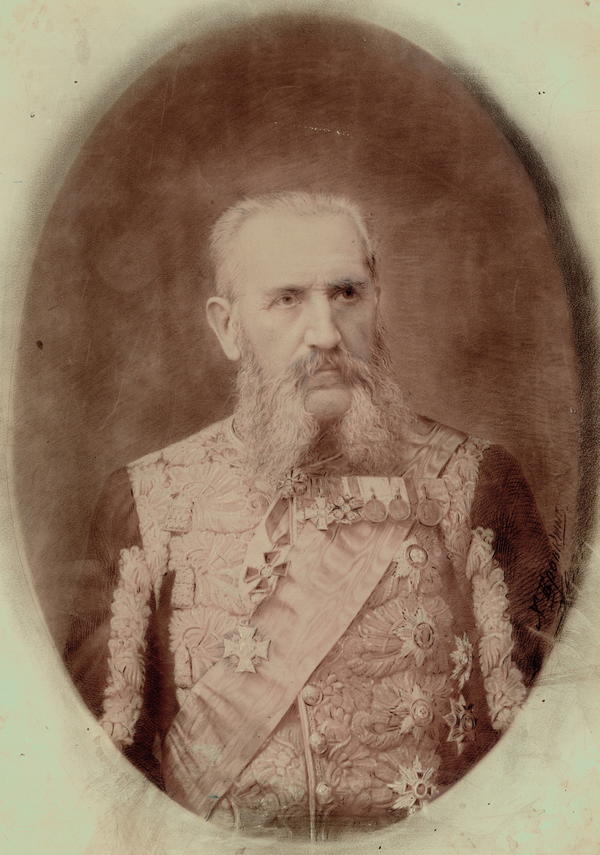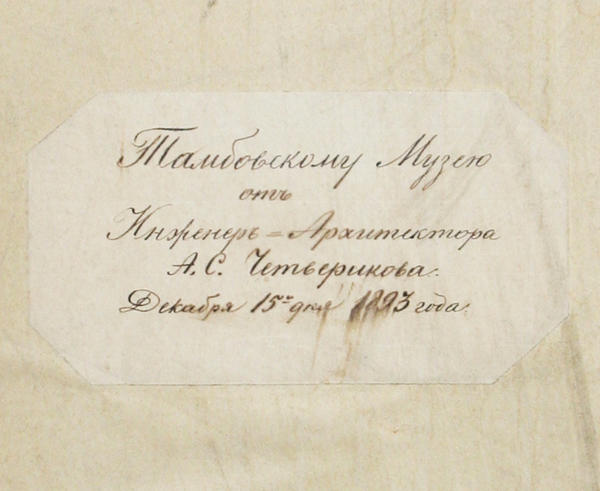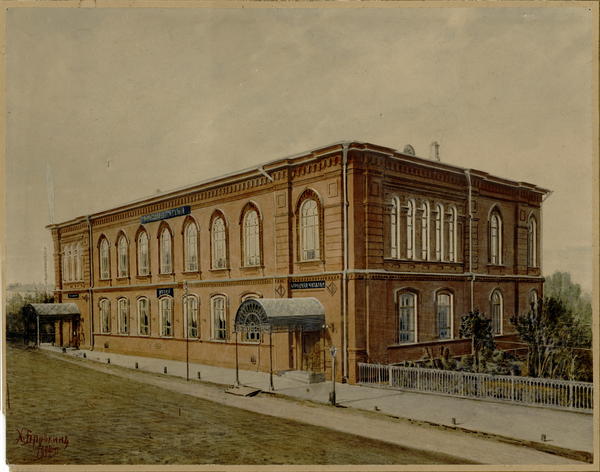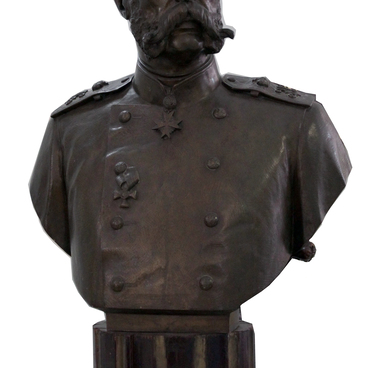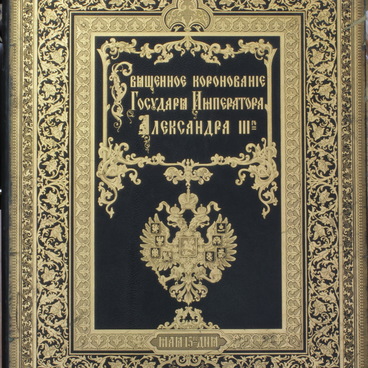The portrait of Emmanuil Naryshkin was taken by photographer Khrisanf Brovkin in 1892. In 1893, engineer Chetverikov donated the photograph to the Tambov Museum. The back of the portrait has a sticker with a dedicatory inscription: To the Tambov Museum from engineer and architect A.S. Chetverikov. 15th December 1893.
Khrisanf Brovkin opened the first stationary photographic workshop in Tambov in 1880. Ordering a photo was not cheap because the masters used imported reagents — salts of rare metals, including gold, cyanides and solvents. One could buy a 9×12 print at the price of a silver teaspoon. Despite this, the company quickly became popular.
Brovkin was considered one of the best photo masters in the city and often carried out orders of the Tambov Scientific Archival Commission. The negatives of these historical photographs remained in the archives of the studio for perpetual storage. Researchers believe that Naryshkin’s image entered the museum of the Commission along with custom-made pictures.
Emmanuil Naryshkin was a landowner and a philanthropist. He was born in St. Petersburg in 1813; he received his education in Europe. Returning to Russia, Emmanuil entered the School of Ensigns of the Guard — the future Nikolaevsky Cavalry School. Naryshkin studied with Mikhail Lermontov and Nikolay Martynov.
In 1836, Naryshkin began his military service in his first regiment — the Lubensky Hussar Regiment. In 11 years, he rose from the rank of junker to lieutenant colonel, was an adjutant to Benckendorff and Count Alexey Orlov. In 1847, Naryshkin was dismissed from military service due to health reasons. After several years of rest on the family estate in the Tambov Region, Naryshkin returned to public service, and from 1856 was the master of ceremonies at the court of Emperor Alexander III. In 1883, Naryshkin was appointed the steward of the Winter Palace in St. Petersburg, and in 1884 — the chief chamberlain. In essence, that was the highest court rank.
Khrisanf Brovkin opened the first stationary photographic workshop in Tambov in 1880. Ordering a photo was not cheap because the masters used imported reagents — salts of rare metals, including gold, cyanides and solvents. One could buy a 9×12 print at the price of a silver teaspoon. Despite this, the company quickly became popular.
Brovkin was considered one of the best photo masters in the city and often carried out orders of the Tambov Scientific Archival Commission. The negatives of these historical photographs remained in the archives of the studio for perpetual storage. Researchers believe that Naryshkin’s image entered the museum of the Commission along with custom-made pictures.
Emmanuil Naryshkin was a landowner and a philanthropist. He was born in St. Petersburg in 1813; he received his education in Europe. Returning to Russia, Emmanuil entered the School of Ensigns of the Guard — the future Nikolaevsky Cavalry School. Naryshkin studied with Mikhail Lermontov and Nikolay Martynov.
In 1836, Naryshkin began his military service in his first regiment — the Lubensky Hussar Regiment. In 11 years, he rose from the rank of junker to lieutenant colonel, was an adjutant to Benckendorff and Count Alexey Orlov. In 1847, Naryshkin was dismissed from military service due to health reasons. After several years of rest on the family estate in the Tambov Region, Naryshkin returned to public service, and from 1856 was the master of ceremonies at the court of Emperor Alexander III. In 1883, Naryshkin was appointed the steward of the Winter Palace in St. Petersburg, and in 1884 — the chief chamberlain. In essence, that was the highest court rank.

